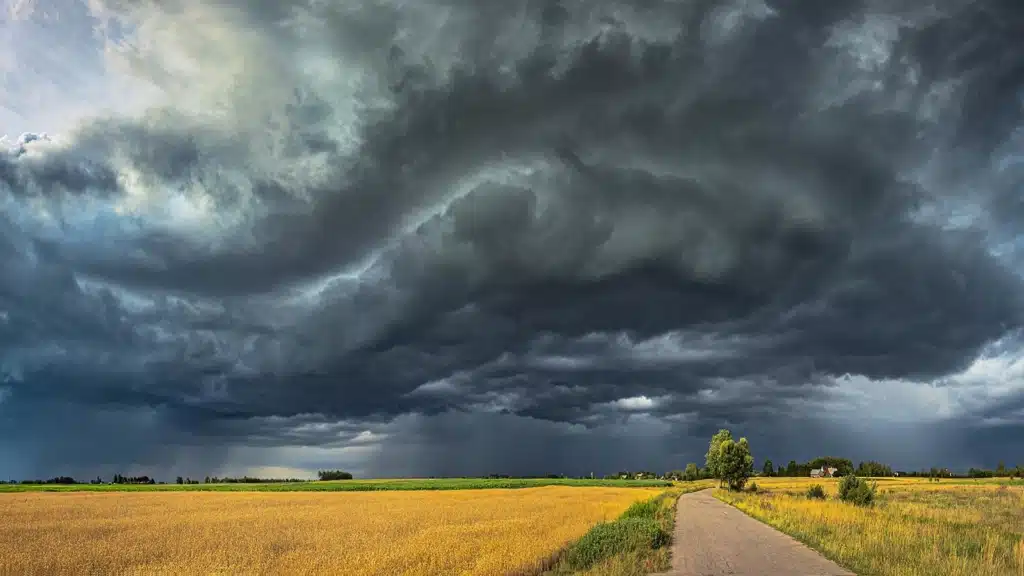 go back
go back
 go back
go back
at the mercy of mother nature
Allergies and asthma can be at the mercy of mother nature. And changing weather often brings with it a change in the severity of symptoms.
Not all change is bad. The right conditions can spell relief for those that suffer.
Thunderstorms might give allergy and asthma patients with a brief relief. But there is such a thing as too much of a good thing. Learn what you need to know about the effects of thunderstorms and how to protect yourself if the storm or symptoms get severe.
Do thunderstorms affect my allergies & asthma?
In a word – yes.
Thunderstorms create thunder and lightning. They also create wind and rain, two types of weather that have a direct impact on allergies.
How wind affects your allergies
Wind connected to thunderstorms can be particularly problematic for those who suffer from allergies. According to the American College of Allergy, Asthma, and Immunology (ACAAI), when the wind gusts prior to a storm, it picks up pollen spores and the pollen count subsequently rises. Once airborne, the tiny pollen grains are easily blown into eyes, noses, sinuses, and/or lungs and can trigger allergy symptoms.

How rain affects your allergies
Rain can either be beneficial or detrimental to those with allergies. The immediate effect of rain is that it washes away the existing pollen spores.
However, the spores that are not swept away are hit by the falling rain drops and broken into smaller pieces. When the rain evaporates, those smaller fragments remain, and the pollen count soars again.
The dampness after a rainfall is also a breeding ground for mold and mildew. Especially in areas with consistently high humidity. Pollen and mold are two of the primary outdoor allergens that can cause symptoms and/or trigger asthma.
Understanding thunderstorm asthma
What is thunderstorm asthma?
Thunderstorm asthma is when asthma symptoms, and in some severe cases, an asthma attack, are brought on by a thunderstorm.
What causes thunderstorm asthma?
While thunderstorms are most likely to occur during the spring and summer, thunderstorm asthma can only happen under a very specific set of circumstances. As noted by the Asthma and Allergy Foundation of America (AAFA), the conditions for creating thunderstorm asthma are typically on a day when both the humidity and pollen counts are high.
The World’s Largest Thunderstorm Asthma Event
The world’s largest thunderstorm asthma event happened in Melbourne, Australia in November 2016, when more than 9,000 people sought treatment for asthmatic symptoms after a severe thunderstorm swept over the area.
The cold downdraft created by the storm concentrates the air particles, including any pollen or mold spores that were the air.
Those spores are then swept back up into the clouds where humidity is high.
Once in the clouds, the wind, humidity, and lightning all act to break apart the condensed pollen and mold into tiny fragments that air easily inhaled into the nose, sinuses, and lungs when they fall back to the earth.
Any pollen or mold grains that were left on the ground are also broken into smaller pieces when hit by rain. Wind gusts created by the thunderstorms can then re-concentrate the smaller particles so that larger quantities of the allergens are inhaled deep into the lungs, triggering asthma symptoms.
Who is at risk for thunderstorm asthma?
People with poorly controlled asthma symptoms, undiagnosed asthma, allergic asthma, and those who experience wheezing and/or coughing as a symptom of allergic rhinitis are most likely to be at risk for thunderstorm asthma.
However, not everyone who exhibits risk factors will be affected by thunderstorm asthma, and even those that do experience symptoms may not have reactions to rise to a severe level.

The difference between asthma and allergic asthma
The primary difference between asthma and allergic asthma is the specific cause of the asthma symptoms and/or attack. Many of the symptoms are the same.
Asthma is defined as a chronic lung condition in which the tubes that carry air in and out of the lungs at times become inflamed and/or constricted, making it difficult to breathe. Allergic asthma is asthma that is triggered by a specific allergen. Per the AAFA, allergens are the most common cause of asthma symptoms.
Symptoms of both asthma and allergic asthma include:
- Tightening of the chest
- Coughing, especially at night or in the morning
- Shortness of breath
- Wheezing
Seasonal allergies can trigger or exacerbate allergic asthma symptoms as the weather changes and both pollen and mold become more prevalent. In addition to the above symptoms, individuals who suffer from allergic asthma may also experience allergy symptoms which can include:
- Red and itchy eyes
- Sneezing
- Stuffiness of the nose
- An itchy or runny nose
The most common allergens that trigger allergic asthma symptoms are:
- Cockroaches
- Dust mites
- Pet dander
- Rodents
- Mold
- Pollen
Tips for Managing Allergy and Asthma Symptoms
When thunderstorms are on the horizon, it’s especially important to make sure you are taking the necessary steps to protect yourself and manage your allergy and asthma symptoms. AllerVie Health specialist John Seyerle, MD suggests these quick tips:
- Be aware of any asthma-related events near you by getting a personalized asthma forecast from the Asthma and Allergy Foundation of America.
- Manage your environmental triggers
- If it’s a high pollen count day, limit outdoor activities

Medically Reviewed By: John Seyerle, MD
Reviewed on: Feb. 14, 2023
Our team of writers, editors, and medical experts goes over each article carefully to make sure the information is correct and that only reliable sources are used.
We regularly check to see if the info in this article matches up with the latest scientific research and expert advice so that we can give you the most up-to-date information. See list of trusted resources here.
Get Help Managing Your Symptoms
If you have allergies or asthma that is triggered by the weather, it’s particularly important to see an allergy specialist to create an individualized management plan.
Make an Appointment